Maddaugh Elementary 24-25


OUR CONTEXT
Our vision for learning is to promote joy, community, well-being, and a love of learning, and to equip our learners to thrive in the modern world. In order to do this, our community works daily on the goals of "Working Hard, Being Kind, and Being Your Best You".

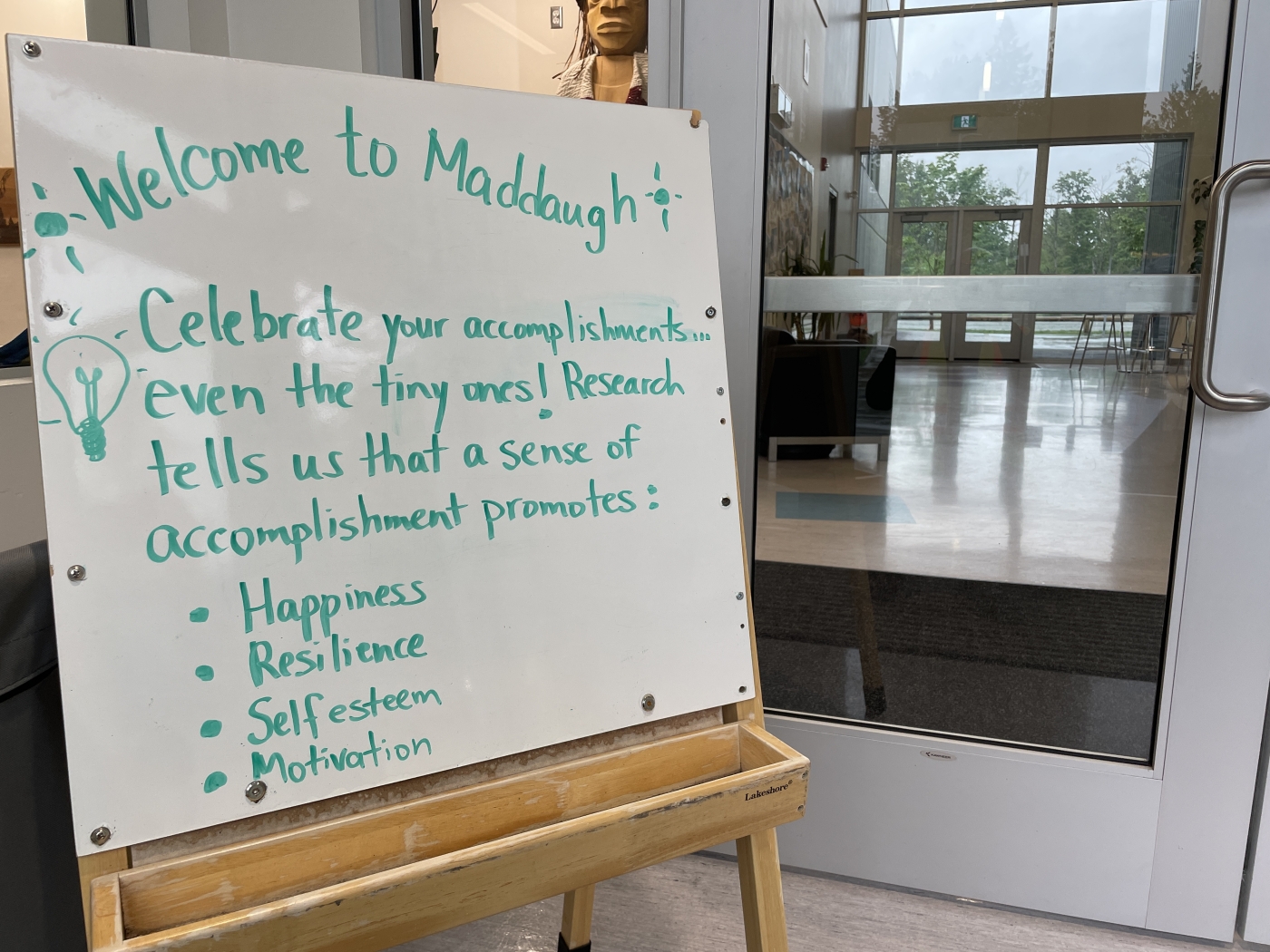
Maddaugh Elementary is a vibrant, and welcoming learning community in the Cloverdale-Clayton area of Surrey, B.C. We opened our doors on March 29, 2021, to a diverse group of learners. We continue to focus on boosting the well-being of our students and staff and to deep the roots of our learning community.
We continue to delve into the following important questions:
- What does it mean to flourish and foster a sense of well-being?
- How can we promote growth in student learning through the lens of positive psychology?
To help explore these questions, we have been investigating the work of Dr. Martin Seligman and his research on well-being. Well-Being theory suggests that there are 5 measurable elements that contribute to a person's "flourishing":
- Positive Emotion: feeling good
- Engagement: finding “flow”
- Relationships: authentic connections with others
- Meaning: purposeful existence
- Achievement: a sense of accomplishment
Collectively as a school community, these themes have been explored through the structure of video morning announcements that are shared every Monday morning. While initially introduced as a strategy to connect Maddaugh students and teachers at both Katzie and Hazelgrove Elementary while our current school was under construction, the Monday morning announcement structure has continued to be used, representing a tool to connect learners to important wellness themes and to each other. Students experience common language and learning and teachers often use these morning announcements as a springboard to further explore PERMA themes deeply in the classroom. Have a look at how PERMA themes are shared with Maddaugh students, staff, and parents:
Video Notes:
- Videos are created each weekend and shared with staff who in turn share with their students on Monday morning.
- Positive emotions come from CELEBRATING ... Maddaugh students celebrate their relationships and enjoyment of school events weekly through a short video at the the start of Monday morning announcements.
- PERMA themes are discussed weekly with a sharing of a through-provoking video and guiding questions. Please view the video starting at 9:50 to view an example.
PERMA explained:
At Maddaugh, we apply PERMA to not only continue to build a sense of community and tradition, but also to help more of our learners flourish. Student ownership has been promoted by making sure students have input into important school decisions that are made, such as the animals that appear on the privacy film throughout the school, the signing of a panel located at the front of the school, to the selection of playgrounds and jerseys, to the signing of our official school-opening plaque. Every step of the way, PERMA has found expression through the student voices that have guided the development of our school culture.
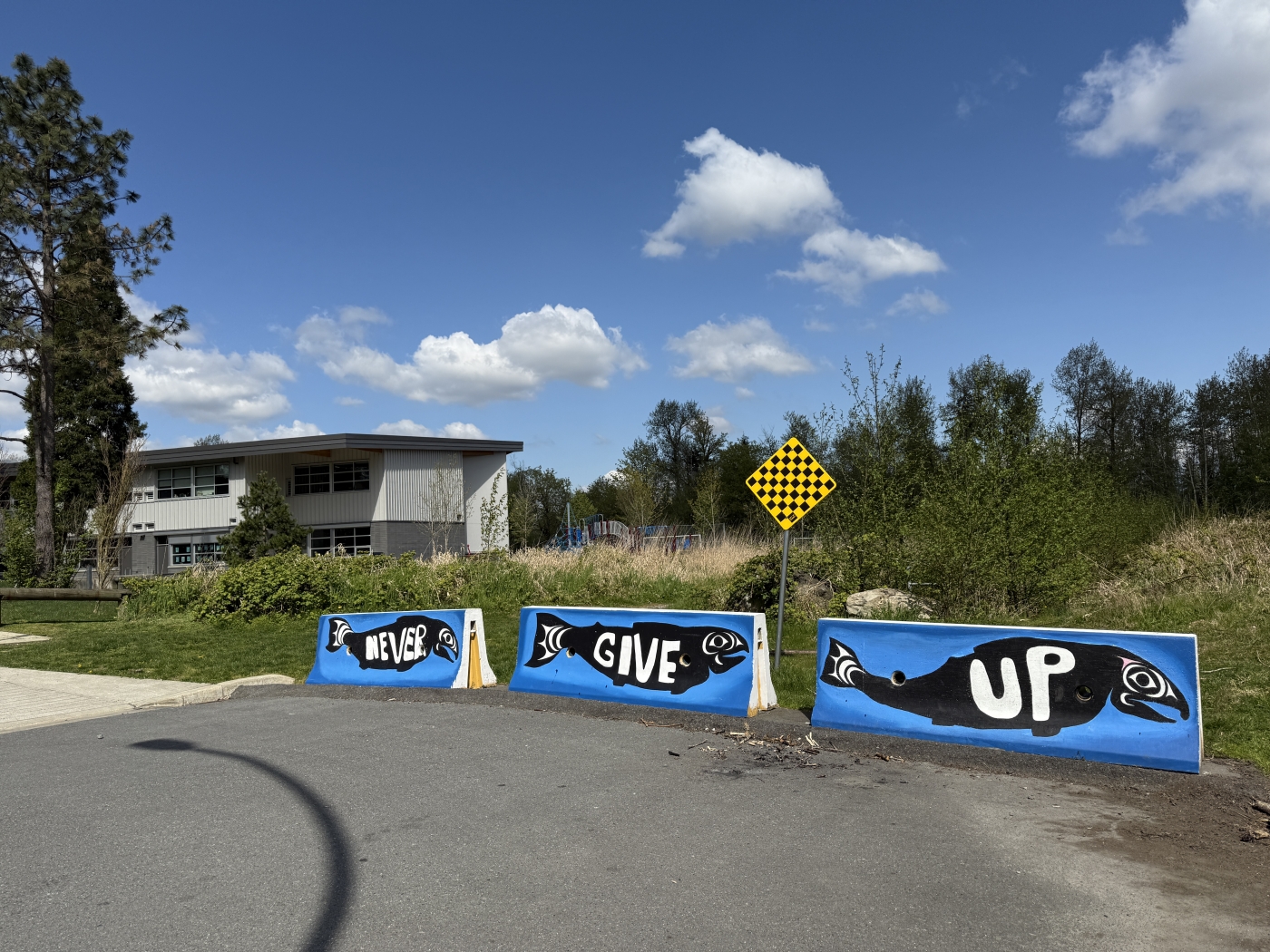 | 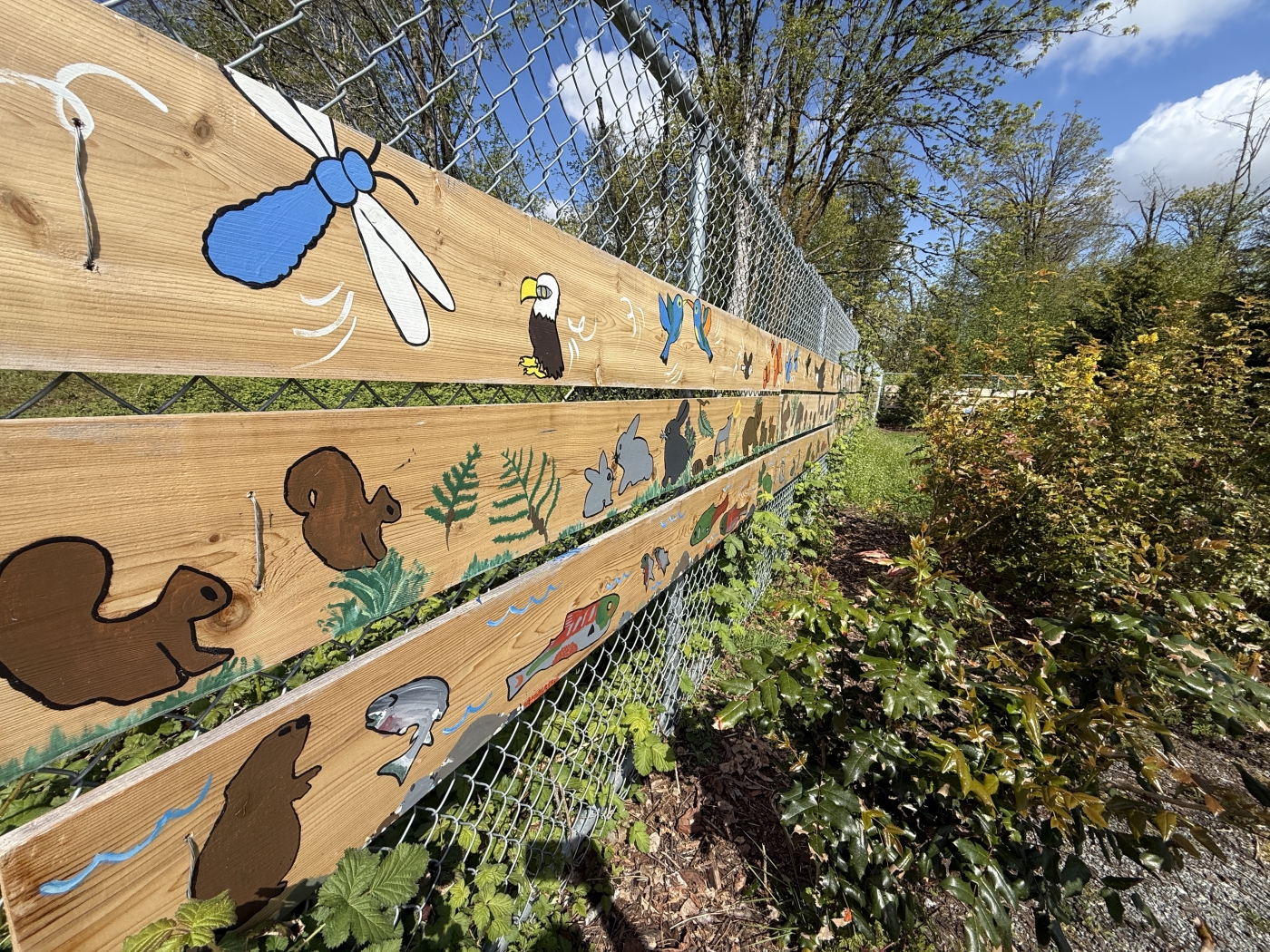 | 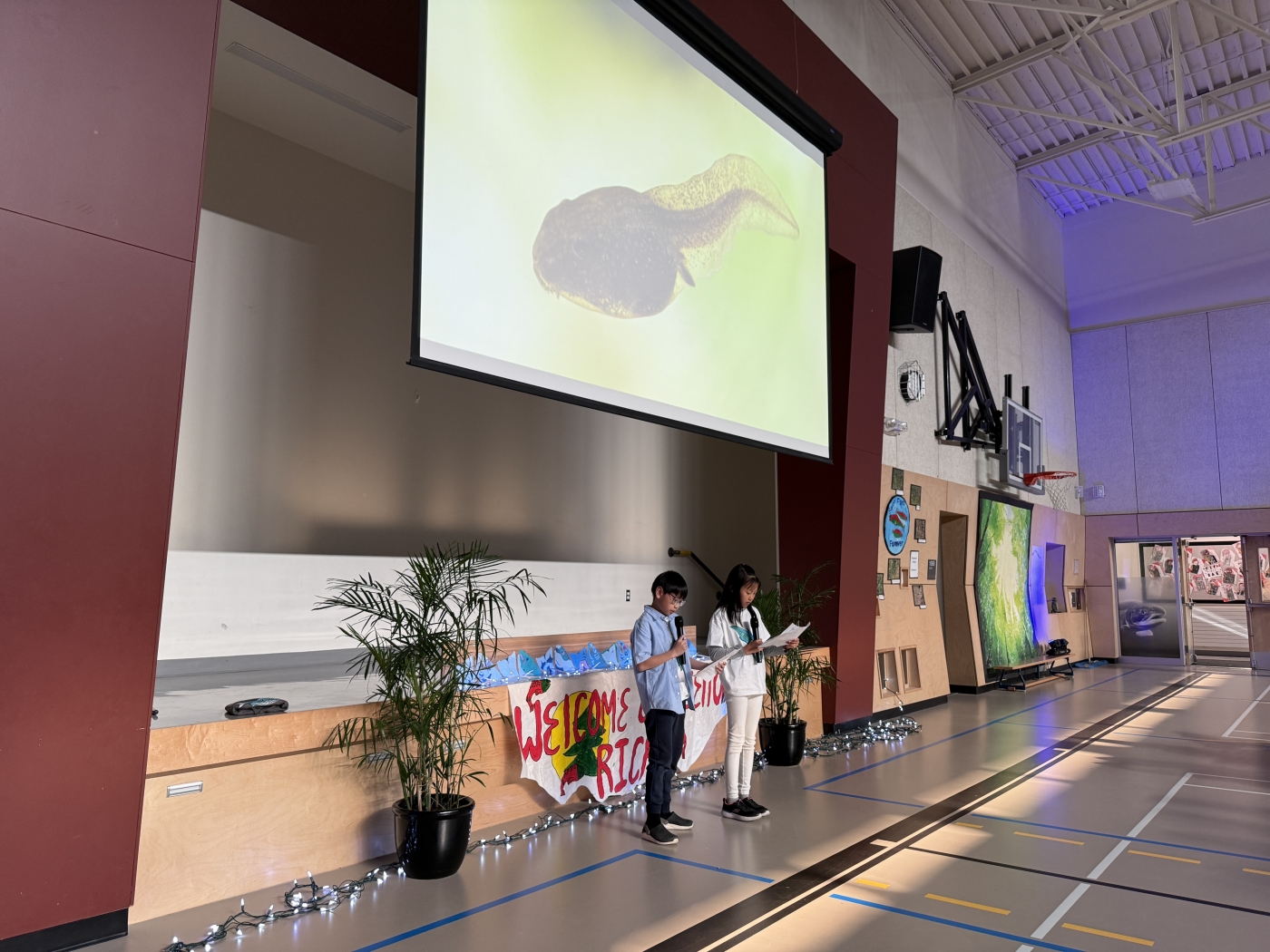 |
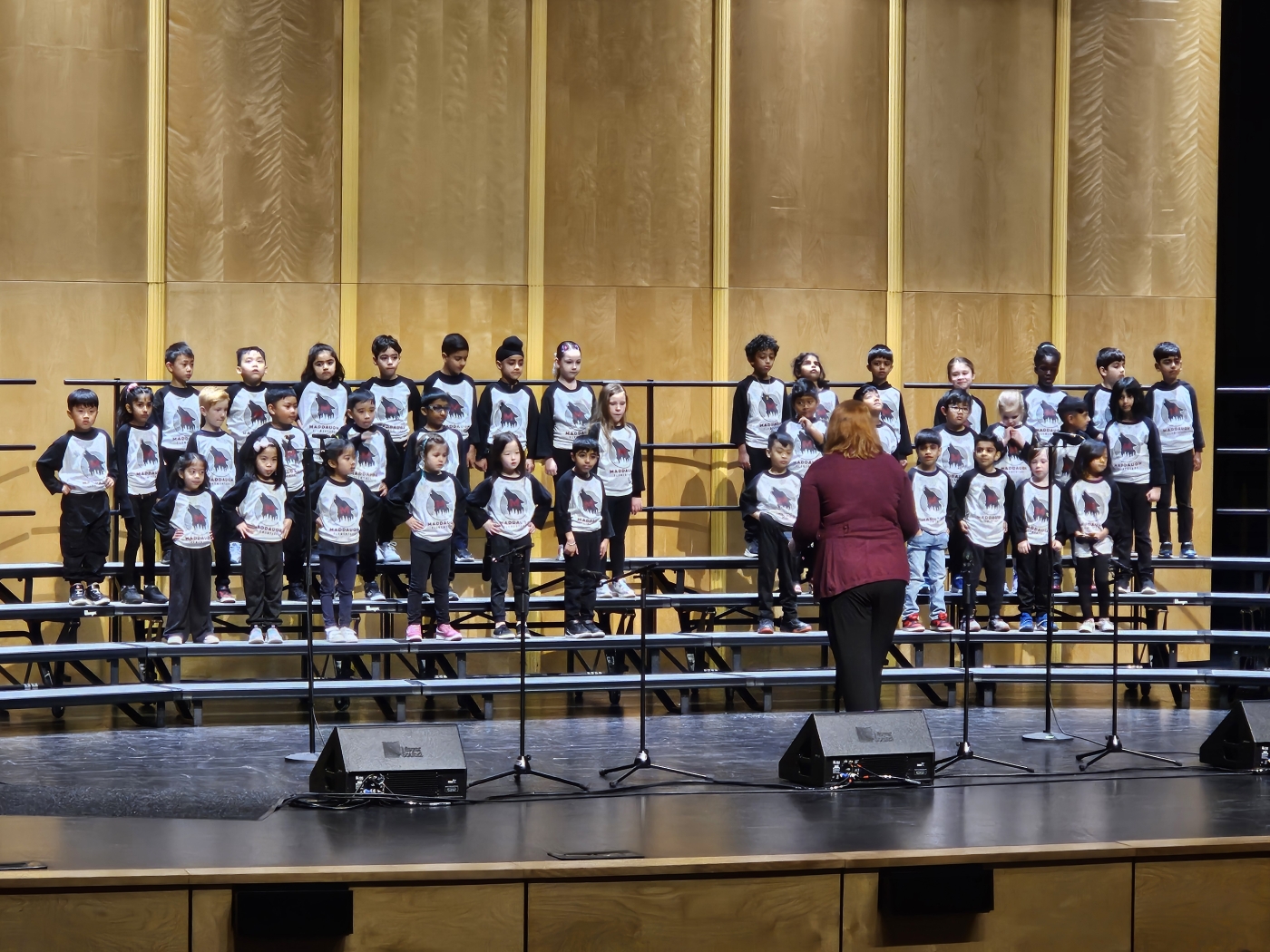 | 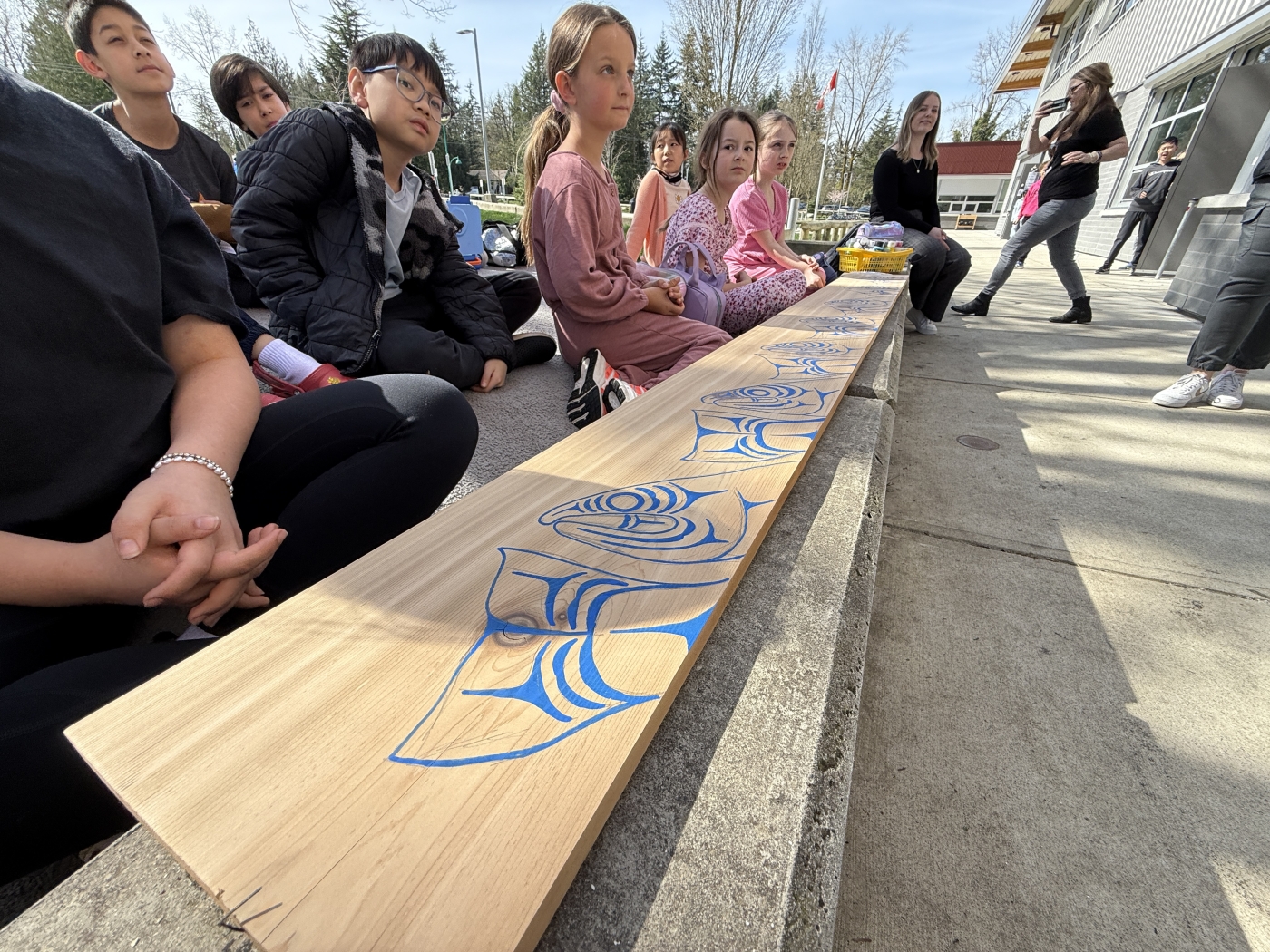 |  |
OUR LEARNERS
Maddaugh learners are diverse in many ways, from their culture, background, and identity, to their approaches to learning, how they view themselves as learners, and their ability to self-regulate.
Maddaugh learners are proud of their school and have a sense of belonging and ownership. How do we know this? When asked what makes Maddaugh special, students said things like:
"It is special because it is a place where you can build a strong community. It is also a place where you can learn freely and safely."
"Maddaugh is special to me, because it respects their students and staff and is very welcoming to the First Nations and tries their best to learn their culture."
"Maddaugh is special because the moment you step through the doors, you’re immediately part of something. You're accepted just the way you are."
"I believe Maddaugh is special because it’s a very accepting community. No matter what skin color, race or sexuality you may have, you will always be able to make new friends."
Based on MDI and FSA data (Middle-years Development Index and Foundation Skills Assessment), the majority of Maddaugh students are "flourishing" - they have friends, engage in school and community opportunities, and are proficient or near proficient in foundational areas of learning such as Literacy and Numeracy. MDI data also suggests that on average:
- A higher percentage of Maddaugh students are "thriving" compared to the Surrey average.
- A higher percentage of Maddaugh students respond "yes" to the question, " I am happy with my life".
- A higher percentage of Maddaugh students report being connected to adults and peers at school.
- More Maddaugh students express a feeling of belonging at their school compared to the Surrey average.
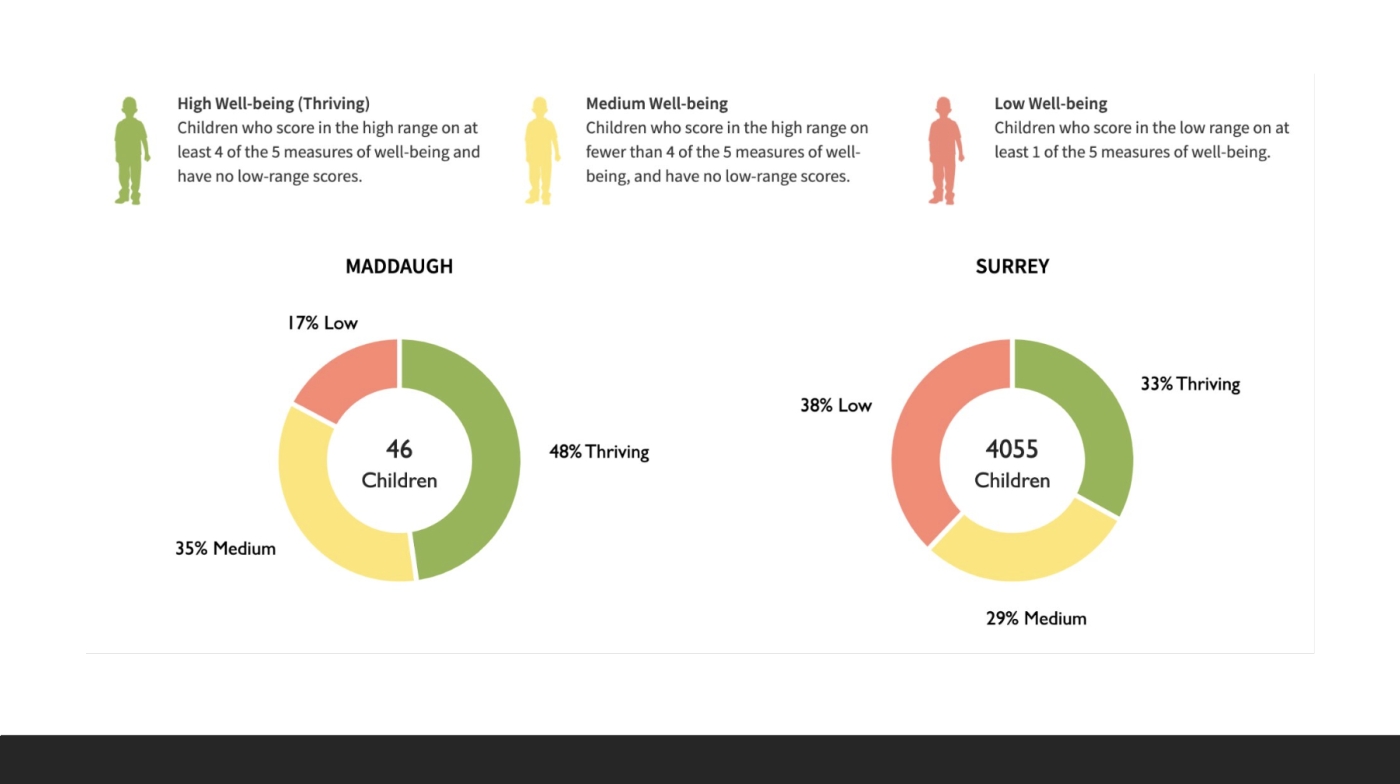 | 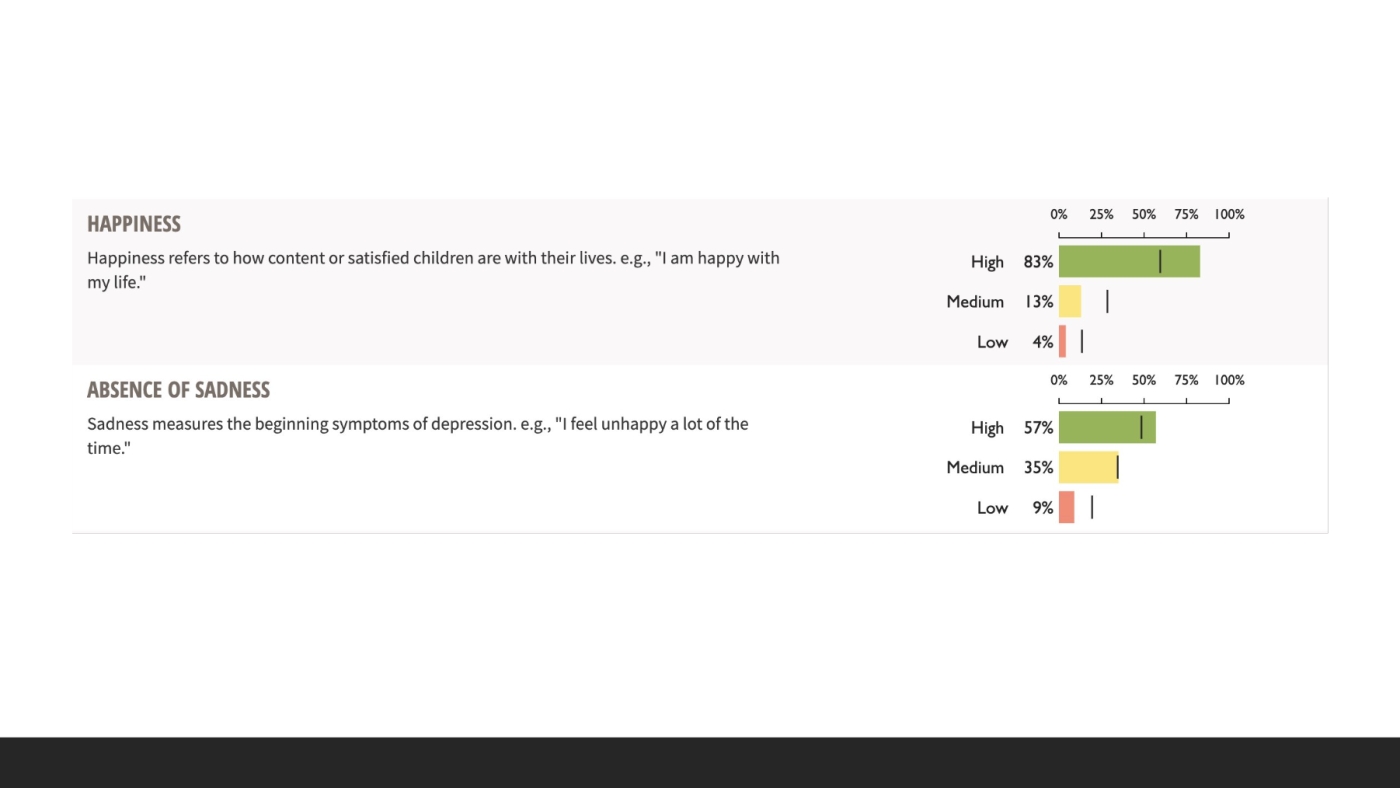 |
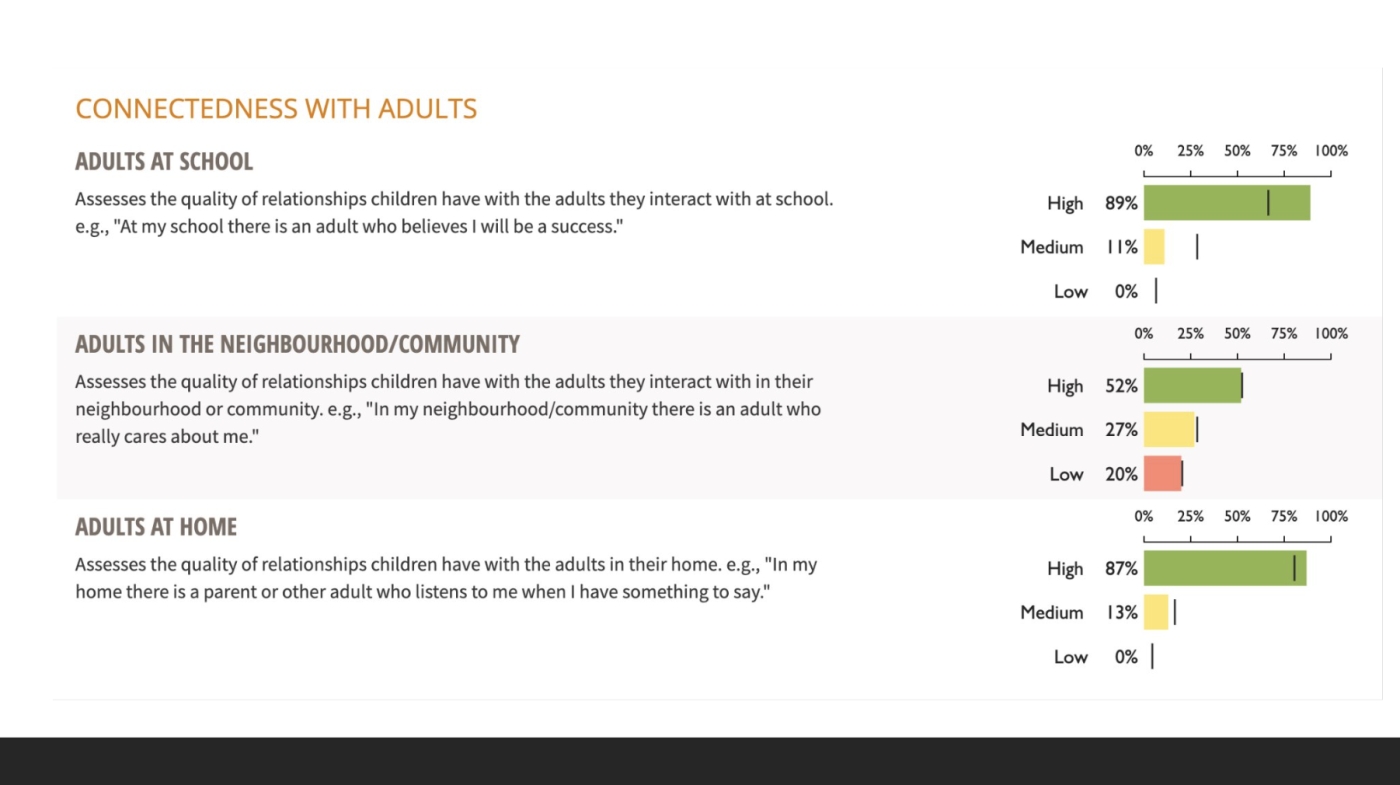 | 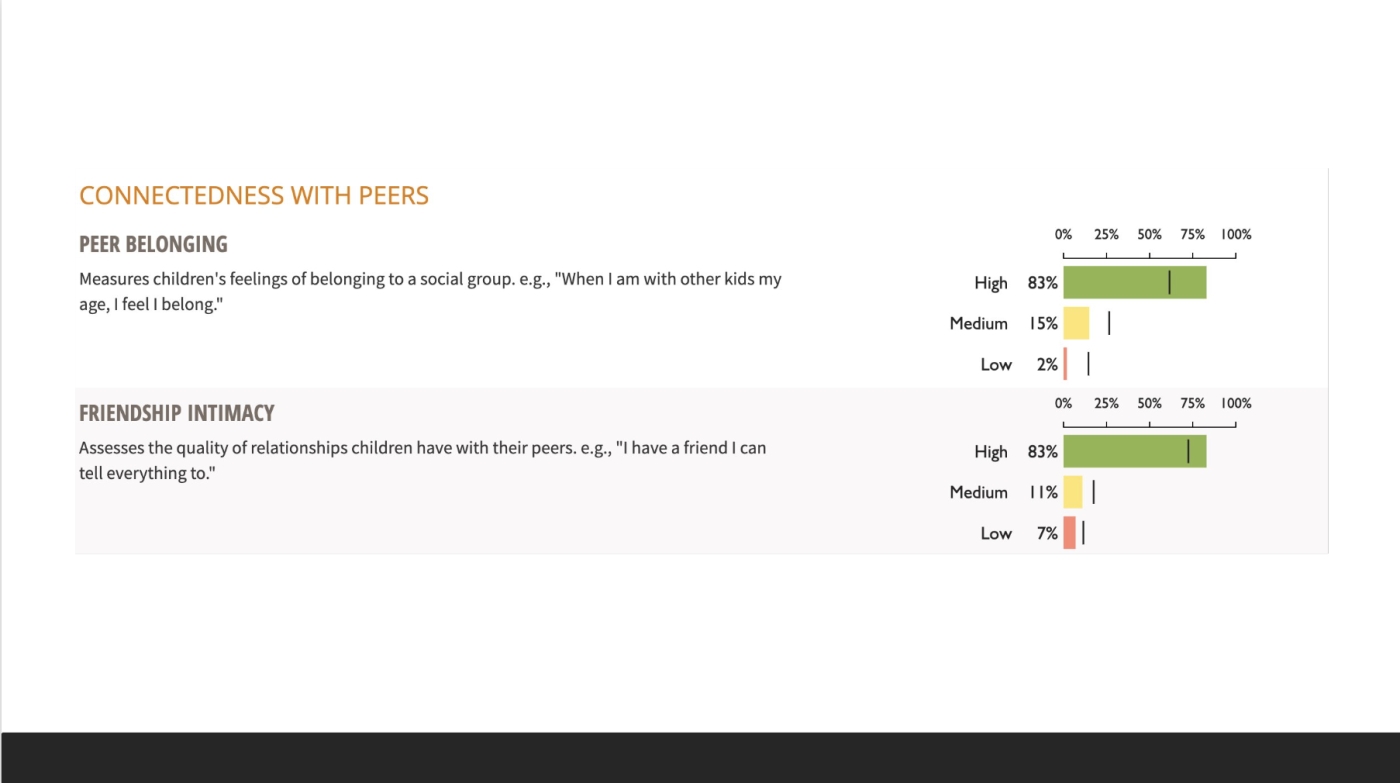 |
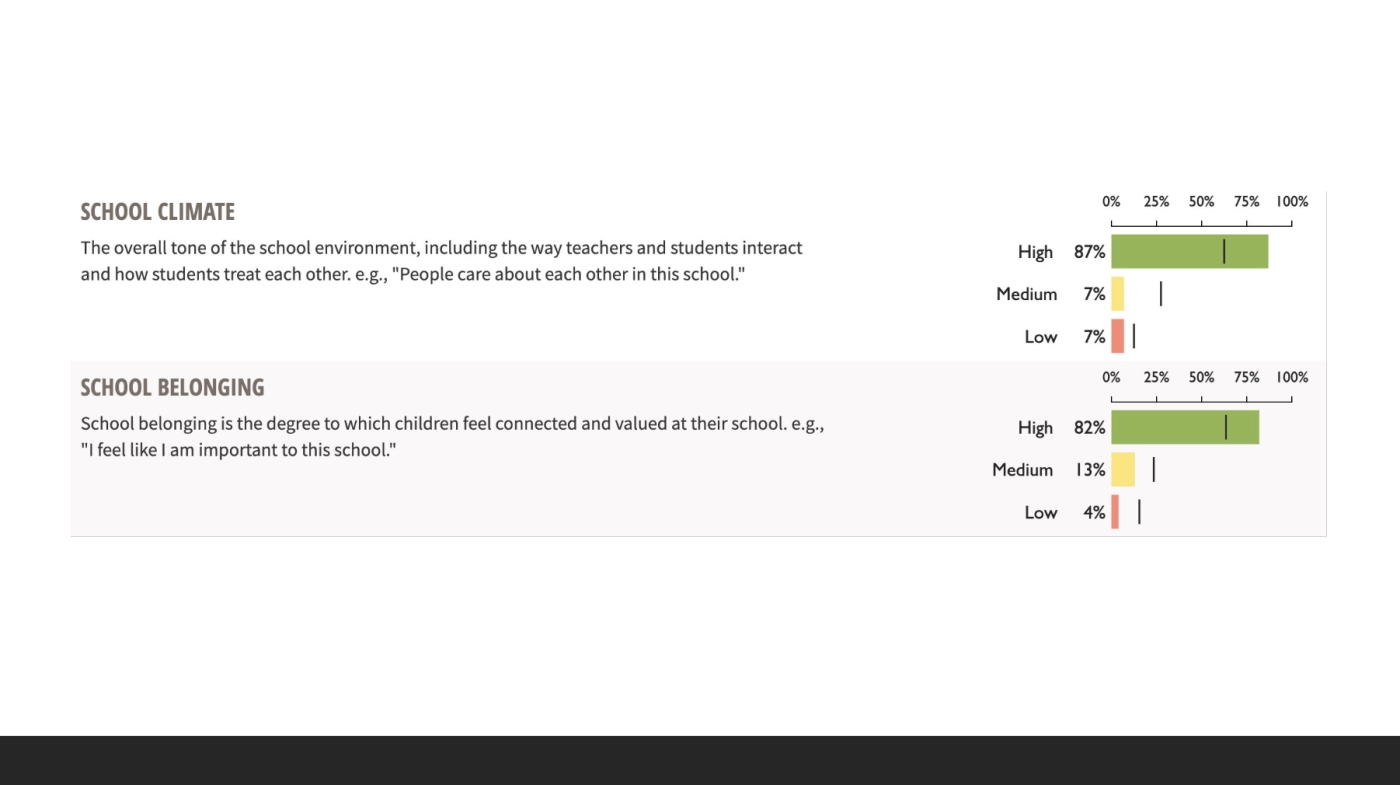 | 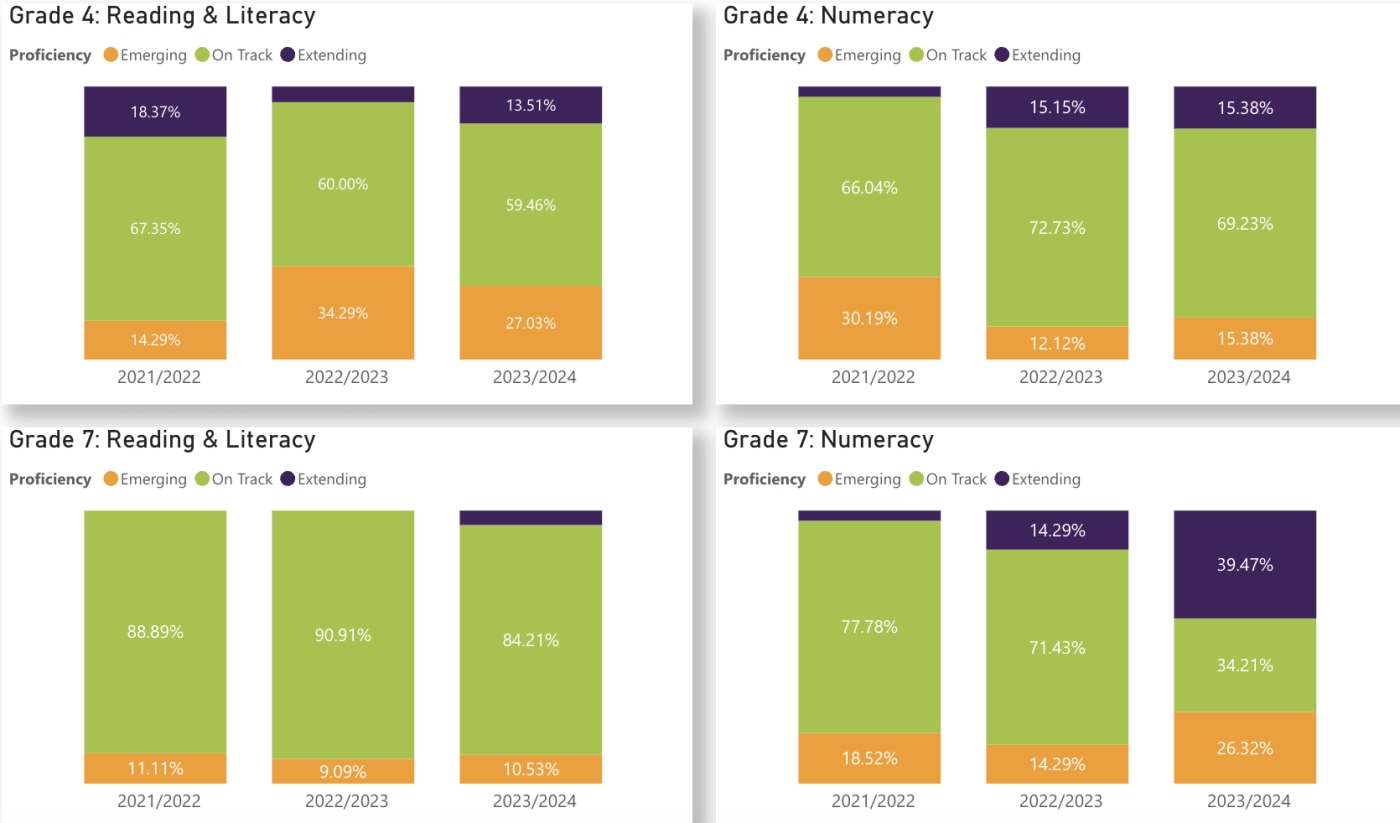 |
OUR FOCUS
For various reasons such as learning challenges, family issues, trauma, extended periods away from school or in blended learning, or a fixed mindset, a subset of learners is either disengaged in the learning process or highly dysregulated.
Through the same collaborative process used in 2021-22 that identified a total of 12 students that were "not yet flourishing", and in 2022-23 another of 16 students, in 2023-24 a total of 17 students were chosen through consultation with classroom teachers to participate in our Social and Emotional Learning (SEL) Inquiry. In 2024-25, a total number of 20 students participated in the SEL inquiry. Students identified as "not yet flourishing" are somewhat to considerably disengaged in the learning process, have a fixed or negative mindset, and are significantly below grade expectations for one or several curricular competencies in foundational areas of learning such as Literacy and Numeracy).
The questions that guided the SEL Inquiry at Maddaugh included:
- Leaning on research and the work we have been doing around PERMA and well-being, what intensive measures and strategies can be implemented to support students who are not yet flourishing?
- How can a focus on student strengths, the use of these strengths in novel ways, and an increase in self-efficacy positively impact their mindset, approach to learning, and academic performance?
And so, the work began again early in the 2024-25 school year!
Our SEL Inquiry included the following phases:
- Selection of students and the identification of a curricular competency that would be tracked over the course of the school year.
- Pre-assessment of curricular competencies.
- Completion of a self-efficacy pre-survey on all students in the group. Questions included:
- I can choose and set a goal for myself
- I can follow steps to reach a goal
- I can remain calm and manage my feelings when something is difficult
- I can tell you something I am good at.
- If I set my mind on something and work hard at it, I can learn how to do most things.
- I lose track of time when I am engaged in a passion of mine.
- I do not give up when I find an activity challenging.
- I feel good when I work hard to achieve my goal.
- I can solve most problems when I work hard.
- Students completed an inventory to help them identify their strengths.
- Using a lead teacher at Maddaugh and mentors from Salish Secondary, students developed a plan in which their strengths could be used in new or novel ways. This is a positive psychology exercise that has been repeatedly connected with long-term benefits (e.g., 6 months) such as higher levels of happiness and lower levels of depression. These "passion projects" were varied and included and included everything from improving basketball skills to developing art abilities to making other people happy by telling jokes and publishing a joke book.
- Students worked with mentors to carry out their plans to apply their strengths.
- Students, teachers, and mentors were interviewed.
- Students completed a self-efficacy post-survey.
- Classroom teachers complete curricular competency post-assessment and survey.
This work would not have been possible without the leadership and hard work of our SEL lead teacher, Neva Whintors. She, along with mentors from Salish Secondary, played a critical role in supporting Maddaugh students in the conception, development, and implementation of their projects.
OUR NEXT STEPS
Based on observations, conversations, and interviews with both students and staff, we discovered that this work had a varied but profound impact on our learners. Specifically, we learned that:
- The average score of the self-efficacy self assessments increased significantly again this year (19.3 on the pre-survey and 27.4 on the post-survey).
- Since many of the subjects in the inquiry were returning students, we see that the general trend is that pre-survey scores are gradually increasing, which speaks to the possible long-term effects of the work they are involved in.

- Teachers reported that 14 of the 20 participants made some gains related to the curricular competency that was identified as a target area for the participant. While this might not be reflected in the official indicators (emerging, developing, proficient, extending), much of the evidence is observed and anecdotal and is noted in the "Other observation" headings below.
- Mentors gained from the experience of working with Maddaugh students as much as the students themselves. This year, we were incredibly supported by Ecole Salish teacher, David Bylenga, who invited students from his Peer Mentorship and Psychology classes to mentor Maddaugh learners. The improved experience of this mentor partnership can in part be attributed to David's involvement, physical presence during mentorship sessions, and overall support.
- Maddaugh students involved in the inquiry developed leadership and mentorship skills themselves.
The following is a summary of the observed growth by staff members over the course of the 8-month SEL Inquiry:
Student 1
- Self-efficacy pre and post self assessments: Pre: 12 Post: 25
- Curricular Competency focus: Numeracy
- Fall assessment: Developing
- Spring assessment: Developing
- Other observations:
- Demonstrates more of a desire to rely less on aids such as calculators
- Less use of pictorial aids in solving problems
Student 2
- Self-efficacy pre and post self assessments: Pre: 10 Post: 20
- Curricular Competency focus: Writing
- Fall writing assessment: Developing
- Spring writing assessment: Proficient
- Other observations:
- Overall improvement in their printing
- They are usually able to independently write complete sentences
Student 3
- Self-efficacy pre and post self assessments: Pre: 31 Post: 32
- Curricular Competency focus: Writing
- Fall writing assessment: Developing
- Spring writing assessment: Developing
Student 4
- Self-efficacy pre and post self assessments: Pre: 24 Post: 35
- Curricular Competency focus: Writing
- Fall writing assessment: Developing
- Spring writing assessment: Developing to Proficient
Student 5
- Self-efficacy pre and post self assessments: Pre: 19 Post: 24
- Curricular Competency focus: Writing
- Fall writing assessment: Emerging to Developing
- Spring writing assessment: Developing
- Other observations:
- Asks for support as needed
- They can write a paragraph with some supporting details
Student 6
- Self-efficacy pre and post self assessments: Pre: 29 Post: 32
- Curricular Competency focus: Writing
- Fall writing assessment: Developing to Proficient
- Spring writing assessment: Developing
- Other observations:
- Overall challenge in getting the student to engage in the writing process
Student 7
- Self-efficacy pre and post self assessments: Pre: 24 Post: 25
- Curricular Competency focus: Writing
- Fall writing assessment: Developing
- Spring writing assessment: Developing
- Other observations:
- Continues to write in lists rather than paragraphs, but still maintains a positive attitude towards story writing.
Student 8
- Self-efficacy pre and post self assessments: Pre: 7 Post: 16
- Curricular Competency focus: Writing
- Fall writing assessment: Developing
- Spring writing assessment: Developing
- Other observations:
- Kindergarten student - drawings have improved and they can now tell a story
- Can write a simple sentence with adult support
- Demonstrates a good attitude towards writing and says they want to become an author
Student 9
- Self-efficacy pre and post self assessments: Pre: 13 Post: 25
- Curricular Competency focus: Writing
- Fall writing assessment: Developing
- Spring writing assessment: Developing
- Other observations:
- Is able to write more and without direct assistance
- Able to write in longer sentences
- Overall improved stamina
Student 10
- Self-efficacy pre and post self assessments: Pre: 14 Post: 27
- Curricular Competency focus: Writing
- Fall writing assessment: Emerging
- Spring writing assessment: Emerging
- Other observations:
- Initially reluctant to write or to use technology to write. Still reluctant but open now to use tech features such as speech to text.
- Increased independence: teacher scribing reduced as a result of technology use
Student 11
- Self-efficacy pre and post self assessments: Pre: 29 Post: 30
- Curricular Competency focus: Writing
- Fall writing assessment: Developing
- Spring writing assessment: Developing
Student 12
- Self-efficacy pre and post self assessments: Pre: 29 Post: 17
- Curricular Competency focus: Writing
- Fall writing assessment: Emerging
- Spring writing assessment: Developing
- Other observations:
- Writing completely unreadable in September.
- Currently can write 10-15 sentences legibly at a time
- Noticeable improvement
Student 13
- Self-efficacy pre and post self assessments: Pre: 27 Post: 31
- Curricular Competency focus: Writing
- Fall writing assessment: Developing
- Spring writing assessment: Proficient
- Other observations:
- Overall improvement organization of writing
Student 14
- Self-efficacy pre and post self assessments: Pre: 27 Post: 32
- Curricular Competency focus: Writing
- Fall writing assessment: Developing
- Spring writing assessment: Developing
- Other observations:
- Teacher Comment: They have made a lot of progress. When interested, they write much more.
- Improved use of conventions.
Student 15
- Self-efficacy pre and post self assessments: Pre: 12 Post: 28
- Curricular Competency focus: Self Regulaton
- Observations:
- Proficient in all learning areas.
- Demonstrated emotional growth and perseverance. Can recognize her emotions and can use the strategies she has been given in order to navigate these emotions.
Student 16
- Self-efficacy pre and post self assessments: Pre: 13 Post: 26
- Curricular Competency focus: Writing
- Fall writing assessment: Developing
- Spring writing assessment: Developing
- Other observations:
- Fewer incomplete sentences
- Improvement in the use of capital letters
- Fewer missing articles and conjunctions
- Much more cohesive writing that makes more sense
Student 17
- Self-efficacy pre and post self assessments: Pre: 9 Post: 24
- Curricular Competency focus: Writing
- Fall writing assessment: Developing
- Spring writing assessment: Proficient
- Other observations:
- Needs support in staying focused, but can write a simple sentence independently.
Student 18
- Self-efficacy pre and post self assessments: Pre: 13 Post: 30
- Curricular Competency focus: Writing
- Fall writing assessment: Emerging
- Spring writing assessment: Developing
- Other observations:
- Increased written output
- Can develop his ideas for writing
- Has built some strategies to support him with writing and perseverance
- They feel a sense of pride when completing written work
Student 19
- Self-efficacy pre and post self assessments: Pre: 15 Post: 33
- Curricular Competency focus: Writing
- Fall writing assessment: Developing
- Spring writing assessment: Developing
- Other observations:
- Initially reluctant, but now approaches writing with a positive attitude
- Output has increased. While this is still a challenge, with writing support they can reflect good ideas in their writing.
- Improved self-regulation, positive attitude towards learning, and has made more friends.
Student 20
- Self-efficacy pre and post self assessments: Pre: 29 Post: 26
- Curricular Competency focus: Writing
- Fall writing assessment: Developing
- Spring writing assessment: Proficient
- Other observations:
- Output has increased
- Increased creativity
- Fewer spelling errors
With an intentional focus on collaboratively highlighting and implementing student strengths, we can have a profoundly positive impact on how students view themselves as people and learners, their mindset, and their willingness to take risks and put effort into academic tasks that are challenging. Sometimes there is a direct and positive impact on a student's academic progress. At other times, it takes time for these increases in self-efficacy and self-regulation to translate into academic progress.
We also learned that this work boosted all aspects of PERMA:
- Through their demeanor and social interactions, we saw evidence that students were more regularly experiencing POSITIVE EMOTIONS.
- Students were more visibly ENGAGED in their work.
- New RELATIONSHIPS were formed, both with peers, other teachers, and Salish Mentors.
- Students were engaged because the work they were engaged with was personally MEANINGFUL.
- Students demonstrated a strong sense of ACCOMPLISHMENT.
As with last year, the findings of this inquiry are compelling. As a school community, we plan to continue our focus on the PERMA model for well-being. We believe that infusing the five aspects of PERMA daily into the experience of our students and teachers provides the foundation and springboard to powerful self-regulation and learning, and will allow all of our learners to flourish. Specifically, our next steps include:
- Continue to advocate to the Surrey School District that they continue the SEL Lead release model. We hope to enter into Year 5 of this inquiry during the 2025-26 school year.
- Re-engaging existing mentors streams at Salish Secondary.
- Laddering some participants of the SEL inquiry into a another phase of personal strength implementation.
- Continue to collaboratively scan our learners for students who are not yet flourishing and inviting them to participate in the SEL Inquiry process.
- More deliberately collecting evidence in a curricular competency to better show growth over time (as in a "two of the same" writing or reading sample).
